READY TO GET STARTED?
REQUEST A FREE ESTIMATE
Fill out the form below or call (888) 466-7849 for a free, no-obligation estimate.
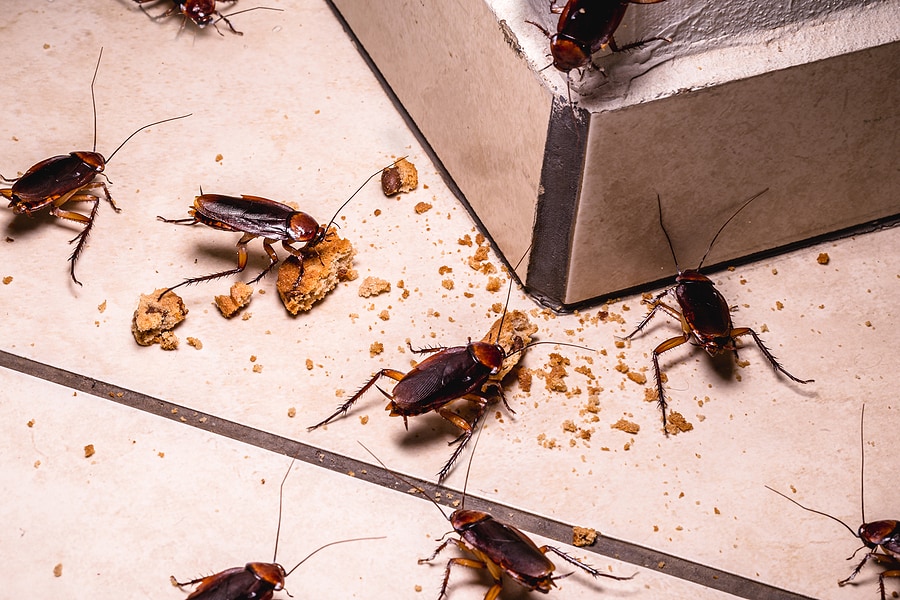
Most people equate cockroaches with dirty homes but this isn’t always the case. What attracts cockroaches to a clean house is food, water, and warmth. While the presence of one cockroach in your home can be enough to send you into a panic, one roach doesn’t necessarily mean you have a full blown infestation. Roaches are social pests, however, and reproduce quickly. If you spot one, odds are there are a few others lurking nearby, in dark corners or cracks and crevices and they could be fast on their way to a full blown infestation.
Cockroaches are dangerous to humans – they carry bacteria on their bodies and their feet, contaminating any surfaces they come into contact with. They can also trigger allergies and asthma. Besides seeing a live bug, how do you know you could have a cockroach problem? Signs of cockroaches in your home include dead bodies; eggs or eggshells (which are small, brown and oval-shaped); droppings (which are dark and powdery like ground coffee); and a strong, musty odor that doesn’t go away.
The best method of roach control is to be proactive in preventing them. Prevent cockroaches by:
Roaches are attracted to dirt and crumbs as a source of food Make sure to always wash dishes after a meal and put them away. Clean up any crumbs and spills immediately. Take out the garbage before going to bed. Clean any grease from your stovetop. Keep food sealed in airtight containers. Sweep, mop, and vacuum on a regular basis. Don’t leave pet food, treats, and water out overnight.
Clearing out clutter gets rid of places roaches can use to hide. Keep rooms clutter free and dusted often. Use plastic storage bins with lockable lids versus cardboard boxes. Eliminate newspapers and cardboard altogether as roaches love to breed in these materials.
Roaches get into homes under doors and through cracks. Identifying these and sealing them up helps eliminate points of entry for cockroaches and other pests. Thoroughly inspect around windows and doors, along foundations and the roof, in attics and crawlspace vents, and around holes used for utility and plumbing lines. For small holes and cracks, use caulk to seal them. For larger holes, especially around pipes, use steel wool and foam to seal. Fine mesh wire can be used to seal around attic vents and chimneys.
Roaches, like most pests, need water and moisture to survive. Therefore, standing water or excessive moisture can attract roaches to your home. Regularly inspect your plumbing for leaks and repair them immediately. Make sure to check faucets, sinks, refrigerators, and appliances for leaks and excessive moisture. Crawlspaces are also a common source of excess moisture in homes. Consider crawlspace enclosure to help minimize moisture under your home.
A cockroach infestation can be extremely difficult to control. Prevention can only go so far in the battle against roaches. If you suspect you have a problem with cockroaches, contact a professional pest control company who can help identify the type of roach you have, thoroughly inspect your home to identify points of entry or food sources, and help set you up with a comprehensive roach control treatment and prevention plan.
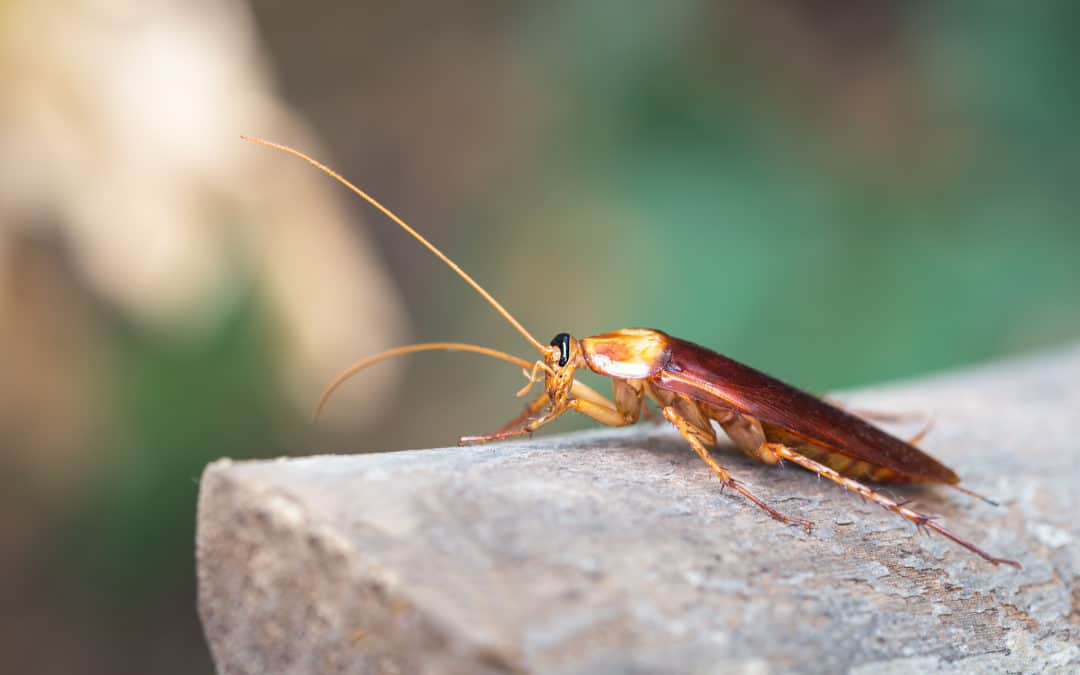
To most homeowners, cockroaches are all the same. They can sneak into homes, contaminate food, and be a nuisance to your entire household. While we tend to lump all cockroaches into one category, it’s essential to recognize that there are many different species of roaches around the world. Cockroach control methods depend on which species you are dealing with. Two popular roaches in southeastern states that get easily confused with one another are the Oriental cockroach and the American cockroach.
The oriental cockroach is a common species in the South. With a glossy body and cherry to black coloring, these roaches measure 1 to 1.25 inches in length. While they can cohabitate with American roaches, they usually prefer the outdoors rather than the indoors. Oriental roaches cannot live without water for more than two weeks, which means they are on a constant search for both a water and a food source. They often feed on decaying organic matter, starchy foods, and garbage.
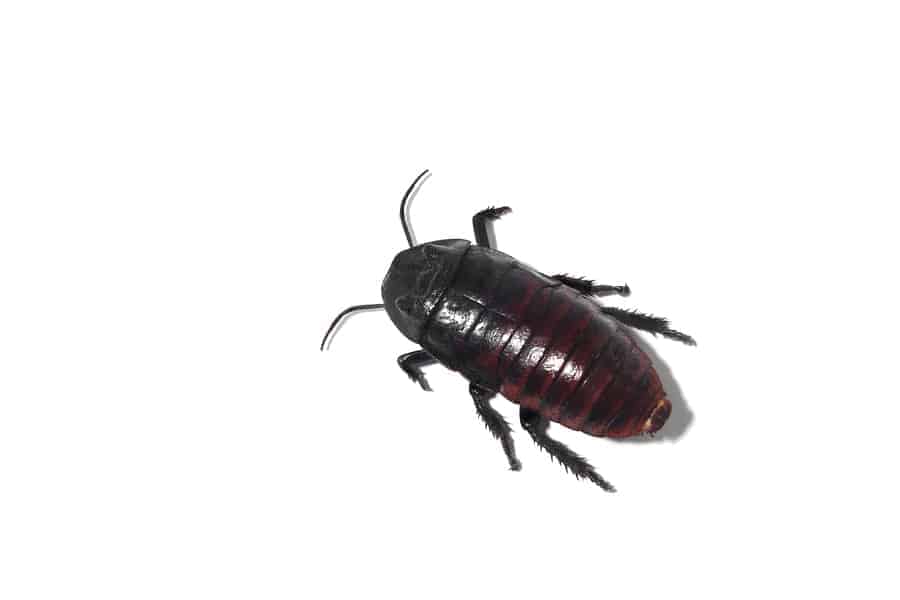
The American cockroach is quite a common species, especially in the state of Georgia. These roaches are chestnut to light brown color with a light-yellow band around the back of their head. Adults can get up to 2 inches in length and can live up to two years! Like the oriental cockroach, American roaches are in constant search of a water source and you will often find them near pipes, sewers, and basements. While they will feed on most foods, they particularly like fermenting material such as small insects, fungi, and algae. If they find themselves indoors, they will eat any crumbs or food found in appliances, kitchen cabinets, and floors.
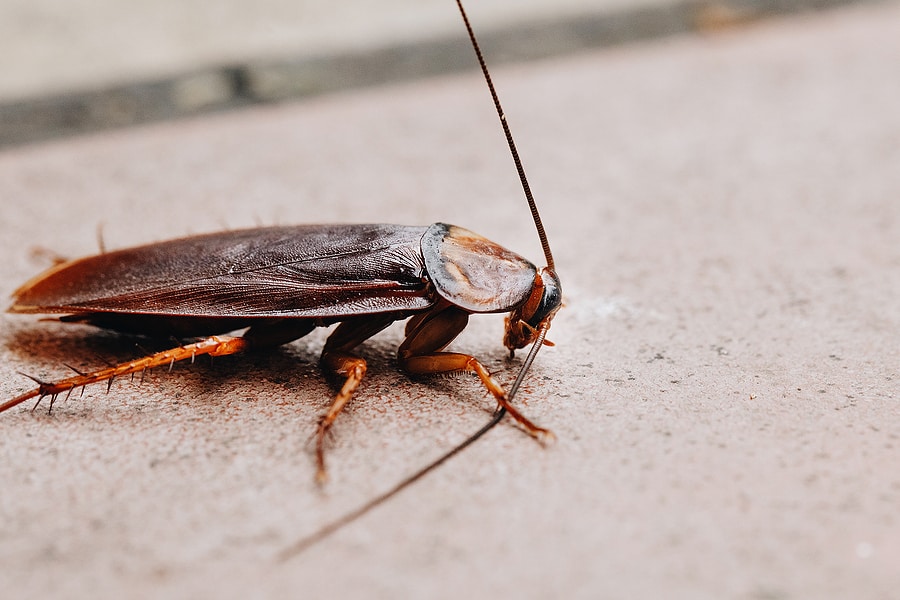
Prevention is the key to keeping these pests from entering your house. Help prevent cockroaches by using these tips:
– Thoroughly clean your home each week.
– Store all food in tightly sealed containers.
– Clean up yard debris such as leaves or fallen tree limbs.
– Don’t let shrubs, trees, or woodpiles touch your home.
– Don’t forget to clean under forgotten spaces such as under the fridge, stove, and inside cabinets.
If you’ve done all the preparation you can but are still seeing roaches, consider contacting your local pest control company where they will help identify the roach, eliminate them, and keep them from coming back.
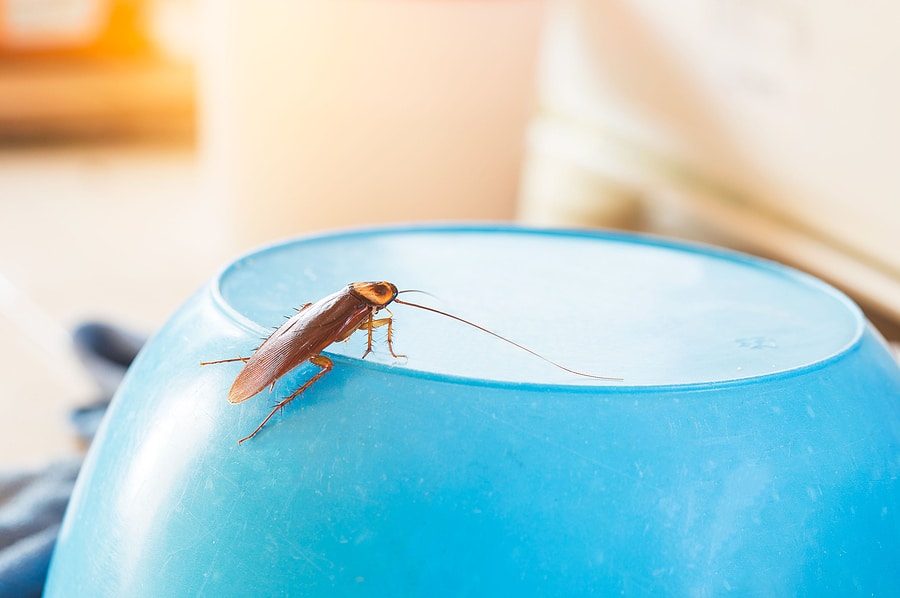
You’ve prepped your home, made sure all messes are cleaned, and closed all open gaps, but you’re still seeing roaches in your home! Why are these pests still attracted to what’s inside your house and how do they keep entering?! We break down some common cockroaches you could be seeing and how they keep sneaking in!
The Species Matters
It’s important to note that there are several different species of cockroaches. Each species is attracted to and thrive off of very different environments. The Oriental cockroach prefers a dark, cool place to hideout. You can often find them in organic matter such as mulch, wood chips, and even between your home’s foundation. Brown-banded cockroaches, on the other hand, like warmer, drier environments. These cockroaches are commonly found in areas above eye-level, such as cabinets, pantries, and even TVs. Another common species is the American cockroach that prefers living in warm, moist areas. These pests can be found in homes, restaurants, grocery stores – basically anywhere food is prepped and stored!
Hitchhiking Roaches
What attracts roaches can be easily found inside anyone’s home. What if you’ve taken precautions, however, to ensure these pests won’t get into your house but they still keep coming back? There are several reasons why roaches keep finding their way back into your home. Roaches are extremely resilient and are excellent hitchhikers! These pests can be easily transported from one place to the other by hitching a ride in your grocery bags, luggage, and even cardboard boxes. Roaches can also travel from neighbor to neighbor, so if your neighbors aren’t taking great roach precautions they could be coming from next door!
What Next?!
Roaches are year-round pests making them extremely hard to control. Because of this, you’ll have to take precautions 12 months out of the year to keep them out of the house. Here are some tips to prevent roaches throughout the year.
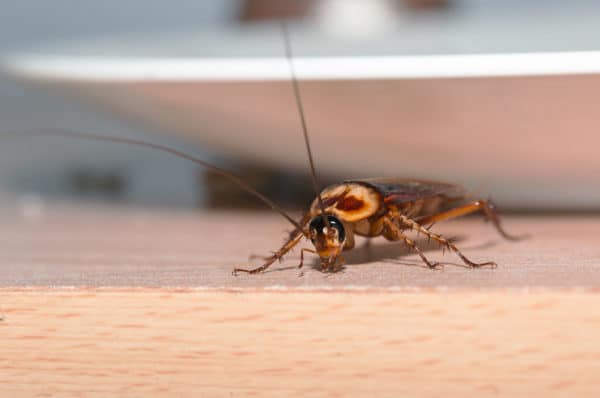
When cockroaches are spotted in your home several questions may run through your mind. The first one is most likely “Oh no,what do I do?” followed closely by “How do I get rid of them?” Once you get over the shock of having one scurry across your floor or countertop, several more questions may come to mind.
What attracts cockroaches? Cockroaches aren’t just attracted to dirty or cluttered houses. Roaches will come indoors in search of 4 things – food, water, heat, and shelter. While dirty or cluttered houses can provide an ample supply of food and shelter, clean houses can provide many of these necessities for roaches, as well. Appliances offer a source of heat so roaches are often found under or behind them. Leaky faucets or pipes can provide a water supply no matter how clean your home is.
Are cockroaches dangerous? The answer to this is a resounding yes. Cockroaches are known to carry bacteria that can cause illnesses in humans, such as salmonella, when it is deposited on your food or food prep surfaces. Roach excrement, shed body parts, eggs, and even saliva have been proven to trigger allergic reactions and asthma in affected people.
What do cockroaches look like? You may wonder why this is important. After all, a cockroach is a cockroach, right? Different species of cockroaches have different habits and require different treatments to completely eliminate a roach infestation from your home. While there are many different species of cockroaches worldwide, there are a few that are common to Georgia. Here’s how to identify each of them to help ensure you get the proper treatment.
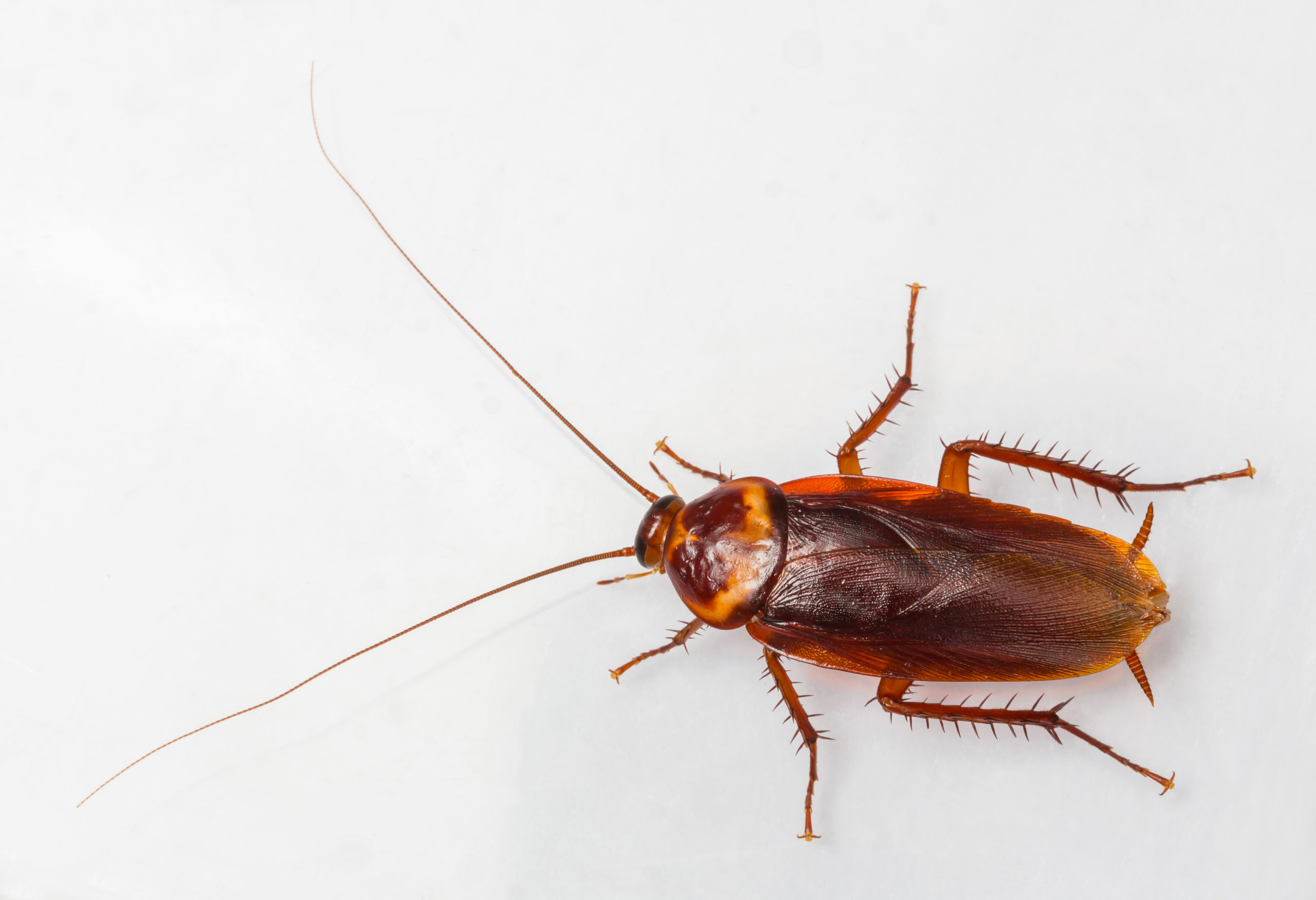
The American cockroach is the largest and most common cockroach found in homes in Georgia. These roaches are a chestnut to light brown color with light yellow bands around the shield behind their heads. They are large with adults approximately 2 inches in length. Male and female American cockroaches have wings and they are capable of flying short distances. This species can live up to 2 years. They are active at night and are often found around water sources like pipes, sewers, and basements. They are also commonly found in kitchens and bathrooms. They often cohabitate with smokybrown and Oriental cockroaches.
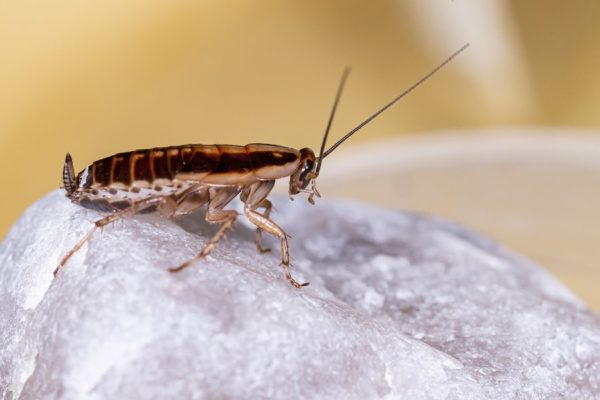
The German cockroach is another easily recognizable cockroach in Georgia. These roaches are tan with dark brown parallel stripes on the back of their upper thorax. They are smaller than their American counterparts with adults measuring about 1/2″ to 5/8″. German roaches can live up to 12 months. This species is also active at night and are often found in kitchens near food and heat supplies from appliances. They also produce more eggs than any other species.
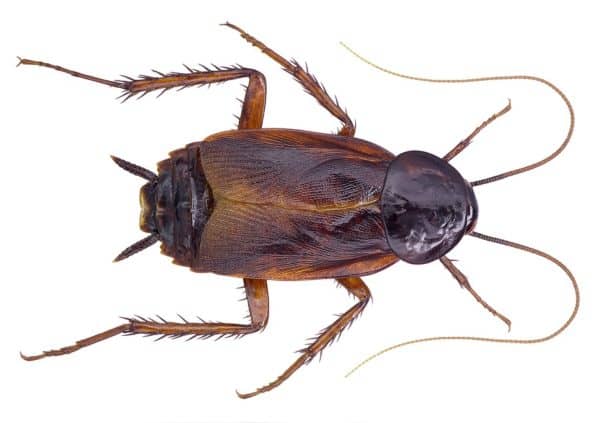
The Oriental cockroach is another common species in Georgia. They are glossy with cherry to black coloring. They are large with adults measuring 1 to 1.25 inches in length. Males have short wings but females are wingless. These roaches can live up to 6 months. Although they often cohabitate with American cockroaches, they are not usually found indoors. Instead they are found outdoors where they feed primarily on decaying matter. They are active at night and have habits similar to their smokybrown cousins.

The Asian cockroach is tan with double parallel strips on their backs. They are often mistaken for German cockroaches. They are a smaller species with adults measuring 1/2″ to 5/8″. These roaches are also found outdoors usually under mulch, leaf litter, or high grass. They usually only come indoors when their outdoor habitat is disturbed. These roaches can fly and are attracted to light.
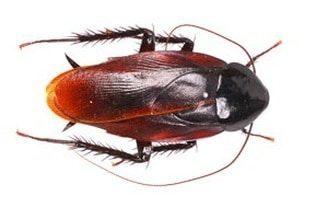
The smokybrown cockroach is dark cherry or red in color. They are large with adults around 1.5 inches in length. They prefer habitats in Southern neighborhoods with mature hardwood trees because they require high humidity and protection from the wind in their shelter. They can often be found in tree holes, attics, crawlspaces, and sheds. They are active at night.
Although you can take some preventative measures to keep roaches out of your home like tidying up, keeping kitchens and bathrooms clean, fixing leaks, and sealing cracks and crevices, they are resilient pests and can often be difficult to eliminate. Contact a professional pest control company who can help properly identify the type of roach(es) you are dealing with, locate points of entry and food and water sources, and effectively and safely eliminate them from in and around your home.
Crane Flies – Are Those Giant Mosquitoes?!
Digger Bee Mounds vs Fire Ant Mounds
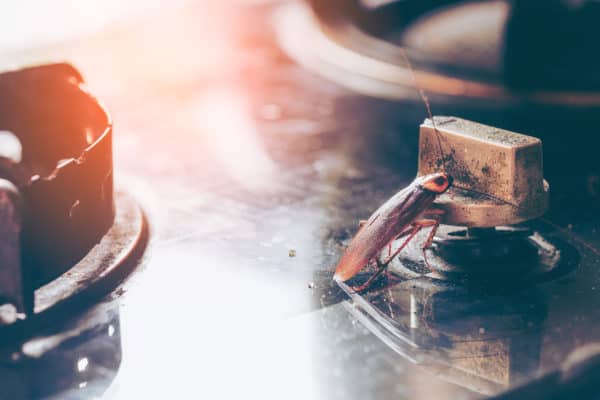
Winter can be a difficult time for cockroaches. While they are adapted to thrive in warm temperatures, these cold-blooded pests cannot survive environments that are too hot or too cold. In fact, some species stop growing and reproducing when exposed to colder temperatures, usually consistently below 45 degrees, for extended periods of time. As temperatures drop, roaches will seek out shelter in warm places, most often in our homes and offices. These buildings provide them with everything they need to survive the winter – warmth, access to water, and an abundant supply of food.
Prevention is key when it comes to roaches. Here are 5 tips to prevent cockroaches from taking over your home this winter.
Roaches are attracted to dirt and crumbs as a source of food Make sure to always wash dishes after a meal and put them away. Clean up any crumbs and spills immediately. Take out the garbage before going to bed. Clean any grease from your stovetop. Keep food sealed in airtight containers. Sweep, mop, and vacuum on a regular basis. Don’t leave pet food, treats, and water out overnight.
Clearing out clutter gets rid of places roaches can use to hide. Keep rooms clutter free and dusted often. Use plastic storage bins with lockable lids versus cardboard boxes. Eliminate newspapers and cardboard altogether as roaches love to breed in these materials.
Roaches get into homes under doors and through cracks. Identifying these and sealing them up helps eliminate points of entry for cockroaches and other pests. Thoroughly inspect around windows and doors, along foundations and the roof, in attics and crawlspace vents, and around holes used for utility and plumbing lines. For small holes and cracks, use caulk to seal them. For larger holes, especially around pipes, use steel wool and foam to seal. Fine mesh wire can be used to seal around attic vents and chimneys.
Roaches, like most pests, need water and moisture to survive. Therefore, standing water or excessive moisture can attract roaches to your home. Regularly inspect your plumbing for leaks and repair them immediately. Make sure to check faucets, sinks, refrigerators, and appliances for leaks and excessive moisture. Crawlspaces are also a common source of excess moisture in homes. Consider crawlspace enclosure to help minimize moisture under your home.
A cockroach infestation can be extremely difficult to control. Prevention can only go so far in the battle against roaches. If you suspect you have a problem with cockroaches, contact a professional pest control company who can help identify the type of roach you have, thoroughly inspect your home to identify points of entry or food sources, and help set you up with a comprehensive roach control treatment and prevention plan.
Is That Bird’s Nest Dangerous?
The Myth of the Granddaddy Long Legs